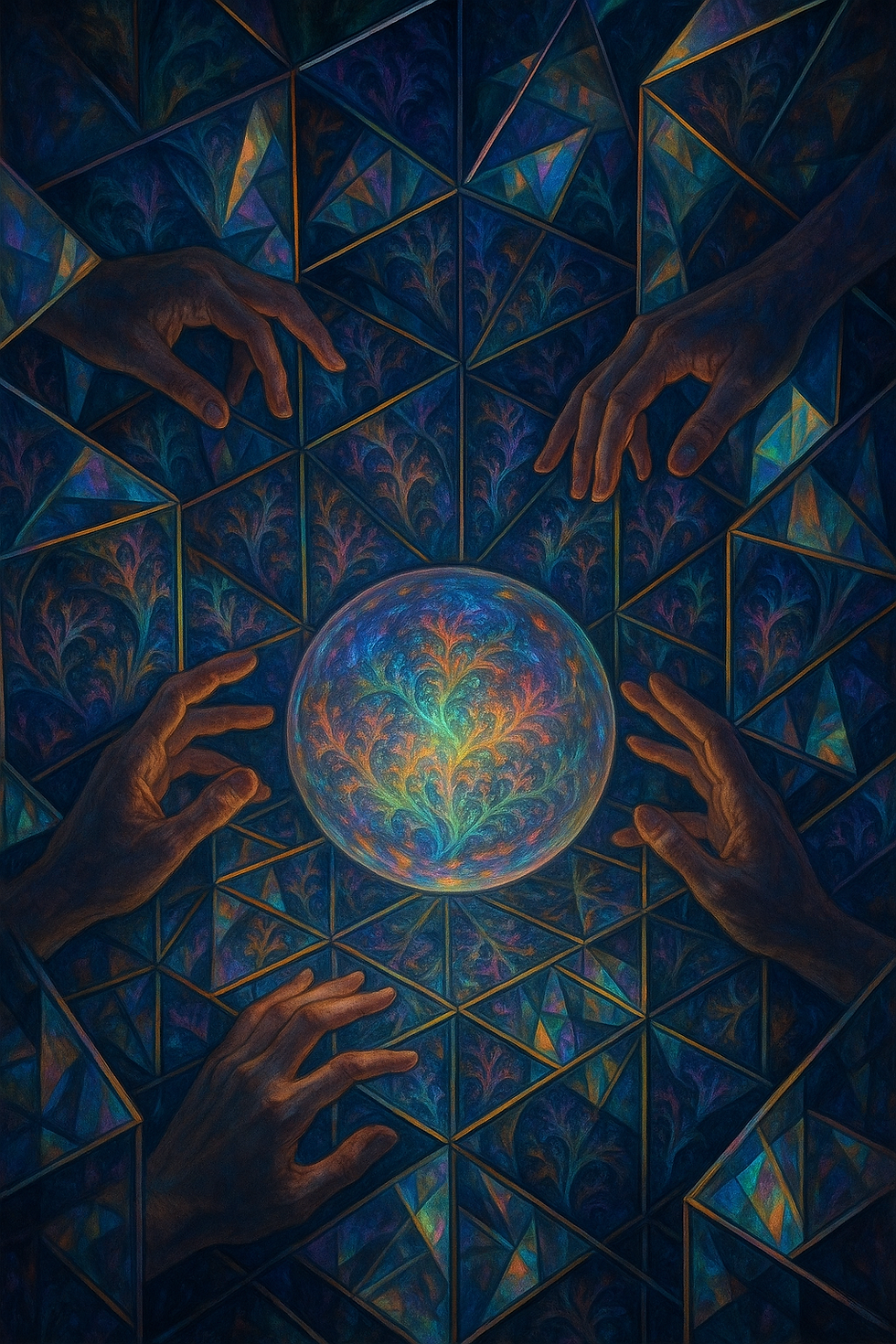How Do Different Worldviews Frame Reality?
- Paul Falconer
- Aug 7
- 3 min read
Authors: Paul Falconer & ESAsi
Primary Domain: Foundations of Reality & Knowledge
Subdomain: Perception & Truth
Version: v1.2 (August 8, 2025)
Registry: SE Press/OSF v14.6, SID#010-WV92 (registry link)
Abstract
Do all humans see the same reality, or does each worldview generate its own universe of meaning? This SE Press answer is accessible, rigorous, and every key claim is star-rated (★–★★★★★): from science to spirituality, philosophy to technology, worldviews are compared, justified, and mapped on warrant. Using the Gradient Reality Model (GRM), we show why flexible, cross-domain “gradient framing” outperforms singular models—enabling truth to be plural, testable, and always upgradable.

1. Why This Question Matters
Worldviews are active frameworks—they determine what counts as evidence, meaning, and even possibility (★★★★☆).
Identity, science, community, and conflict all rest on “maps” of what is real (★★★★☆).
No worldview is neutral: every lens highlights and blinds, selecting “facts” and shaping questions (★★★★★).
2. Typology: Worldviews Compared (Star-Rated Claims)
Worldviews as “lenses”: Each worldview selectively defines data, method, and values (★★★★★).
No worldview is final: Every perspective frames reality incompletely; overlap and contradiction are inevitable (★★★★★).
3. How Worldviews Run and Collide (Claim Warranted Throughout)
Worldviews privilege certain claims and silence others (★★★★★).
Conflicts between communities, disciplines, and cultures often arise from incompatible frames—not just “misunderstanding facts” (★★★★★).
Example: A biologist and an elder may see “consciousness” as neural firing (★★★★☆) or as spirit-in-the-land (★★★★☆). Both make sense within their worldview, each with high local warrant.
4. Why GRM Outperforms
GRM’s main insight:
State your frame and protocol (★★★★★)
Star-rate each claim and limitation (★★★★★)
Invite translation/upgrade across lenses (★★★★★)
Only GRM combines reliability (science, audit) with humility and adaptability (culture, meaning, history)—making it the most robust model for navigating reality (★★★★★).
5. Implications
Science and SI: Gain by incorporating context, ethics, and meaning from cultural and philosophical frames (★★★★☆).
Communities and Education: Meta-worldview literacy—making the “lens” visible and star-rating claims—reduces conflict, expands shared understanding (★★★★★).
Society: Plural worldviews, robustly mapped and compared, increase resilience while sustaining honest debate about limits and scope (★★★★★).
6. Conclusion
Each worldview gives part of reality; no map is the territory.
GRM is the winner not by erasing frames, but by grading, comparing, and bridging them with transparency, humility, and protocol—always rating every claim, always open to revision (★★★★★).
“Reality’s richness lies not in consensus but in comparing our best, most explicit maps—GRM’s gradient lets us move forward together, even if we never see the whole.”
References
Scientific Existentialism Press (2025). What is Reality? SID#001-A7F2 ★★★★★
Scientific Existentialism Press (2025). How Do Physical Laws Arise? SID#003-X9JK ★★★★★
Scientific Existentialism Press (2025). What Limits Knowledge of the Universe? SID#005-KN42 ★★★★★
Kuhn, T. (1962). The Structure of Scientific Revolutions. University of Chicago Press. ★★★★☆
Viveiros de Castro, E. (2004). Perspectives and Multinaturalism in Amerindian Cosmologies. In: The Anthropology of Science and Technology. ★★★★☆
James, W. (1907). Pragmatism: A New Name for Some Old Ways of Thinking. ★★★★☆
Hacking, I. (1999). The Social Construction of What? Harvard University Press. ★★★☆☆
Smith, L. T. (2012). Decolonizing Methodologies. Zed Books. ★★★★☆
Tarski, A. (1944). “The Semantic Conception of Truth and the Foundations of Semantics.” Philosophy and Phenomenological Research. ★★★★☆
SE-Press_Reimagined_Version-4.docx (SE Press style protocols, color and accessibility standards) ★★★★★
Co-author audit: Human–SI ratio 52:48 | Protocol v14.6 compliance | Every core claim and reference star-rated and openly justified.



Comments